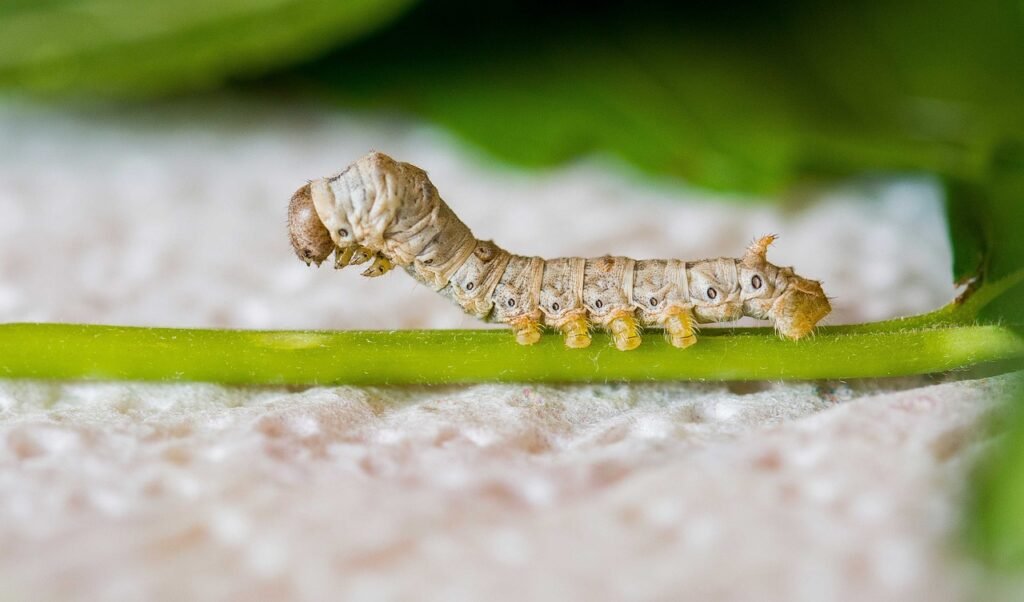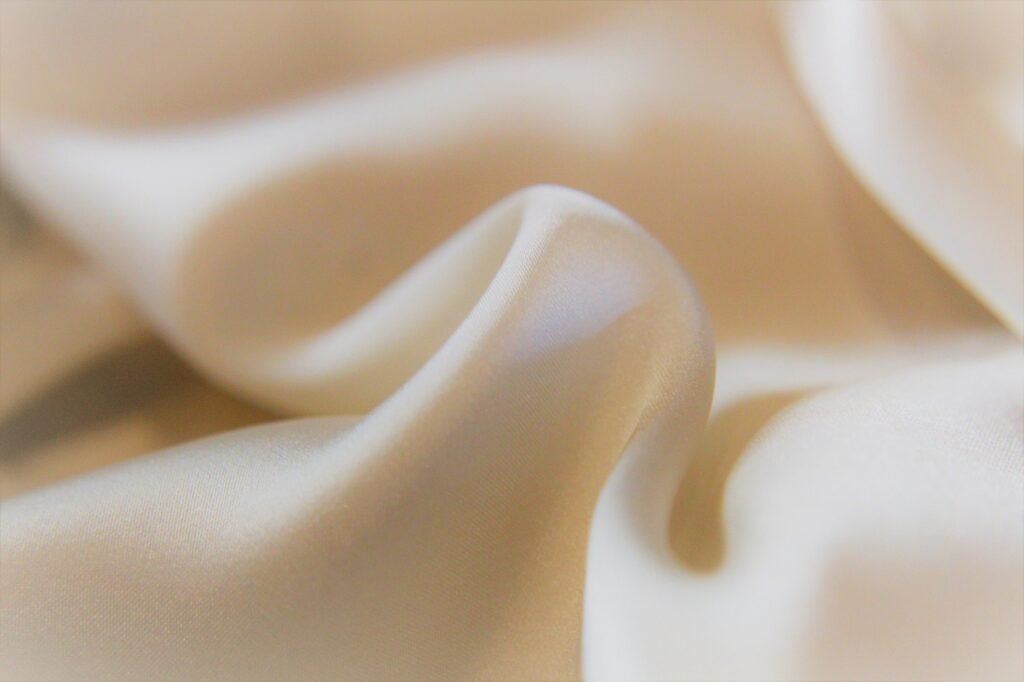Silk Fiber, Production,Types and Chemical Composition of Silk
Silk Fiber
Silk, the most elegant fiber, was first discovered in China by Empress Si Ling Chi when she was sitting beneath a mulberry tree in the palace garden enjoying a cup of tea. Suddenly a cocoon, which had been attached to the tree, fell into the Empress’s teacup. Attempting to remove it, she was fascinated to discover very fine thread started to unravel.
For three thousand years, China held a monopoly in the silk industry. Then sericulture as silk production is called—spread to Japan via Korea. Afterwards, silk production gradually spread westwards over Asia.
Production of Silk
Like wool, silk is an animal fiber. But instead of being grown in the form of hair, it is produced by insects which is called silkworm. It is not a worm at all, but a caterpillar. At the early stage, the caterpillars are only about ¼ of an inch long and about 1 to 2 mm in thickness. These caterpillars are very delicate and require the utmost care. When first born, they are dark green in color and have voracious appetites. It is estimated that each caterpillar eats about 30,000 times of its initial weight. It lives on one thing only—the leaves of the mulberry tree. The silkworm spends its life doing little else but eats.

At the end of about 30 days, the caterpillar ceases to eat, attaches itself to a piece of straw, and begins to spin its cocoon. With rapid movement of its head, the liquid silk spins from a gland on the lower lip of the caterpillar, which hardens on contact with the air forming a very fine filament. Sericin or silk gum exudes from the two nearby glands as it helps the caressed fibers to adhere to one another. Thus a silkworm surrounds itself with a strongly built cocoon made from a continuous silk strand that may be up to 1.6 km (1 mile) in length.

The life of silkworm is very short—only about two months. During that period they pass four stages of development:
- Eggs (300-400)
- Worm (35,000 silk worms)
- Cocoon, and
- Moth
The finer grades of silk are harvested before the moth emerges (i.e., the moths are killed). When it emerges, it eats through one end of the cocoon, cutting most of the fibers into much shorter lengths.

Types of Silk
A variety of silk fiber is found considering certain factors related to its quality and methods of production.
Raw Silk:
Silk fiber, comes from the cocoon, is coated with protective layer called silk gum or sericin. Silk with all of its gum is termed as raw silk. The gum occurring naturally in silk can be removed in various ways and is termed silk degumming.
Tussah Silk:
Silk made from wild silkworms is called tussah silk. The natural color of tussah silk is usually not white, but shades of pale beige, brown and grey. It is usually coarser than cultivated silk.
Bombyx Mori:
Bombyx mori silk, also known as mulberry silk, is produced by domesticated silkworms. They are raised on diet mulberry leaves. This type of silk is exclusively softer, finer and more lustrous than tussah silk.
Reeled Silk or Thrown Silk:
It is the term for silk fiber that is unwound from the silkworm cocoon. The fibers are most fine, very long and of great strength.
Spun Silk:
Silk fibers made from broken cocoons are shorter in length and they feel more like cotton.
Weighted Silk:
When yarns are prepared for weaving, the silk yarns are boiled in a soap solution to remove the natural silk gum or sericin. The silk may lose from 20 to 30% of its original weight as a result of boiling. As silk has a great affinity of metallic salts such as tin and iron, the loss of weight is replaced through the absorption of metals. Thus, a heavier fabric can be made at a lower price than that of silk, which is known as weighted silk. Heavily weighted silk has some disadvantages:
- Sunlight and perspiration may weaken or destroy the weighted fibers.
- Heavy weighting causes silk to crack.
- Long treatment of silk in the weighting process may have a weakening effect on the fibers.
Pure Silk:
If the natural gum or sericin is removed from the silk and no further material, i.e., metallic compound, is added to increase the weight of the fiber, then the silk is called pure silk. Pure silk is exclusively soft and possesses fine luster.

Chemical Composition of Silk
The raw silk strand from which a cocoon is built is composed of two fine filaments of fibroin cemented together by sericin gum. Raw silk also contains some other things such as coloring matter, ash, wax, and fat in small quantities. The content of these substances is not constant and varies in a wide range that depends on the species of silkworm and on the condition and place of rearing. The average composition of raw silk is as below:
| Components | Percent |
|---|---|
| Fibroin | 72-75 |
| Sericin | 22-23 |
| Ash | 0.1-1.5 |
| Wax and Fat | 1.4-2.7 |
| Salts | 0.3-1.6 |
Both fibroin and sericin are protein compounds. The silk fibroin is composed of long-chain amino acid units joined by peptide links with hydrogen bonding between parallel chains.

It is important to note that it does not contain sulfur and the long chain molecules are not linked together by the disulfide bridge. Here the bonds between molecules are strong ionic and hydrogen bonds.
Fibroin and sericin are both complicated compounds of carbon, oxygen, and nitrogen. The elementary composition of the fibroin and sericin of mulberry silk is given below:
| Elements | Fibroin | Sericin |
|---|---|---|
| Carbon | 48.4% | 44.32% |
| Hydrogen | 6.5% | 6.18% |
| Oxygen | 26.7% | 31.20% |
| Nitrogen | 18.4% | 18.30% |
It is possible to differentiate the fibroin from sericin in various ways. Sericin dissolves easily in warm water and in alkali solution, but fibroin is insoluble in usual solvents. Fibroin easily reacts more acidic than sericin and produces a different color with color indicators. Thus, the fibroin sericin in a piece-crammed solution gives a carmine color, whereas the fibroin turns into yellow.
